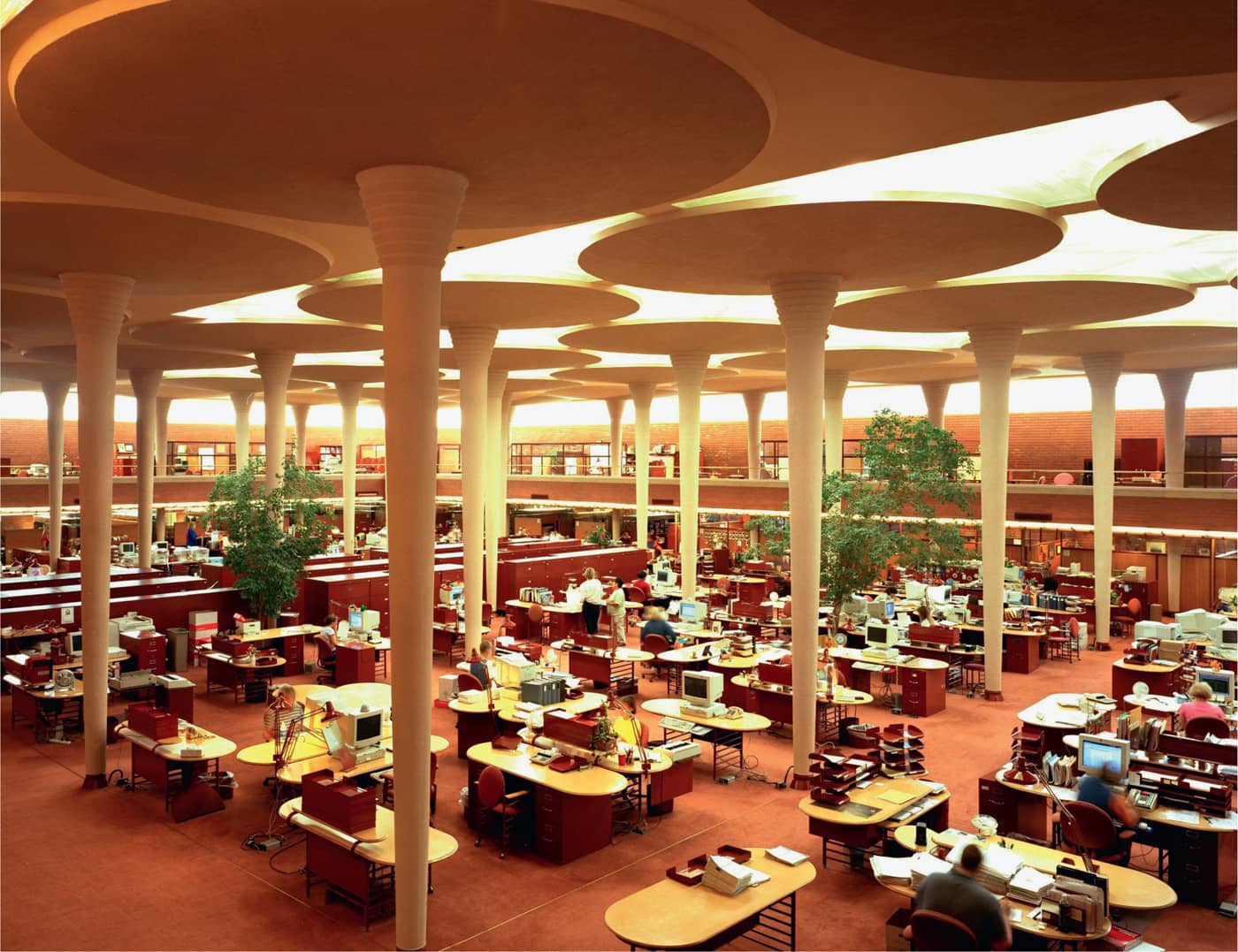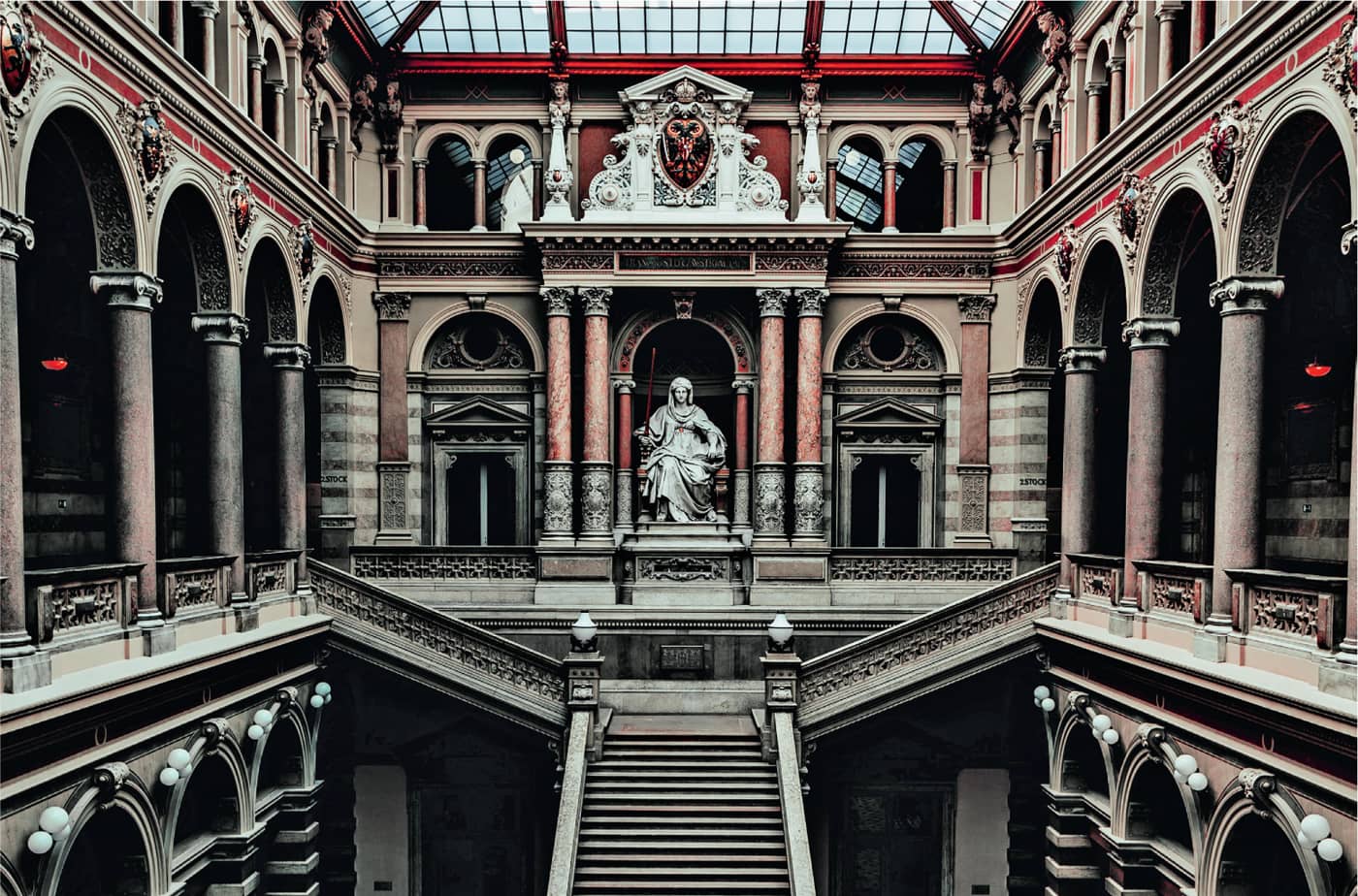89 Symbolism
The attribution of meaning to objects and spaces.
Symbols, or iconic elements, have a performative role by presenting objects that suggest the use of a space. Symbols are iconic—if you ask a child to draw a house, they immediately draw a box topped with a triangle to imply dwelling. Symbols are a learned and acquired visual language that has cultural and historical connections to spaces. The most obvious use of symbolism in an interior is in civic and religious spaces; the gravitas of a city seal over a door, or the minbar of a mosque, suggests the authority or reverence that these places elicit.
Symbolism can also be implemented in less formal and unexpected ways a large framed opening in a room can be symbolic of direction or suggest performance; or the shape of a window can symbolize its function and type. In older office layouts, the large corner office symbolized leadership and power, which in today’s office landscape has been replaced by open space and horizontal structures. Gatherings of couches and soft seating suggest a less top-heavy hierarchy and more relaxed attitude toward work.
Color can also be a symbol of mood and tone, and varies according to culture and tradition. Bold colors with intense hues symbolize energy and optimism, while natural tones indicate calm, quiet, or contemplation.

In the prayer hall at the Cambridge Central Mosque by Marks Barfield Architects, timber columns rise to skylit openings that speak of connection to a higher being.

In a similar way, the lily pad columns inside the Great Workroom in Frank Lloyd Wright’s Johnson Wax headquarters in Racine, Wisconsin, provide implied protection and wonder for the workers below.

The dramatic use of stauary, bas-relief, and ornate detailing in the Justizpalast in Vienna, Austria command authority and reverence.
